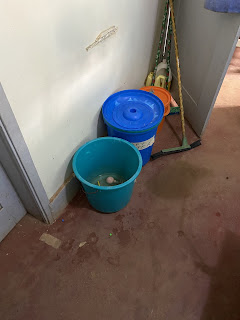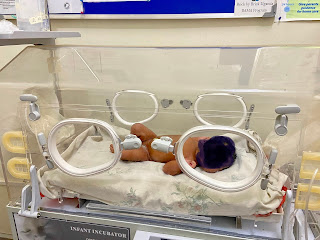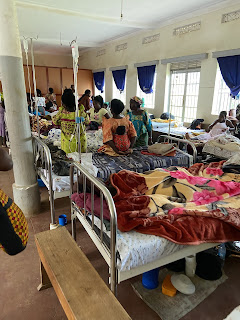Study Theme: Maternal Health
Defining and Exploring Maternal
Healthcare in Uganda
By: Courtney Harrington, Mackenzie
Simon-Collins, Suzan Nakalawa
Hello from Lake Mburo
National Park! We are the maternal health group. In this blog post we will tell
you information we have learned on our topic in the two weeks we have spent in
Uganda so far.
Our first maternal
health site visit took place at Kalisizo Hospital. First, we interviewed the
head midwife Jennifer, who told us about the ward. We first learned how to use
a partogram--a paper chart used to monitor the progress of the labor and the
health of the mother and child. Mrs. Jennifer told us major risk factors for
mothers--first-time births, multiples (twins and triplets), previous scarring,
and mothers with more than four previous children. We learned that cesarean
sections often cause complications like infections due to poor wound care.
Mothers often stay for three or fewer days after their cesarean section,
whereas the recommended post-surgery stay is seven days. This relates to the overall
conditions of the maternity ward at Kalisizo Hospital, because there is not
enough space to accommodate all patients in quality and length of care compared
to what is recommended. Besides the cramped space and lack of patient
isolation, the maternity ward lacks the supplies (medications, gauze, cotton
wool, gloves, etc.) needed to give every woman a safe birth. To combat this
issue, mothers can buy “mommy kits” with these supplies and bring them to the
ward for their delivery, but not every woman is capable of buying these kits.
The maternity ward lacks medical instruments like stethoscopes; instead,
simplified tools and gloved hands take their place. The hospital as a whole
faces sanitation issues. For example, tools are sanitized in buckets of bleach
for twenty minutes and do not go through the rigorous inspection process
performed in the United States. Health care providers do not always wear gloves
and hands are seldom washed in the ward. Also, there is a poorly covered pit
outside of the ward where placentas are thrown to decay just a few feet from
the street.
 |
| The few medical tools available in Kalisizo hospital are sanitized in bleach buckets. |
 |
This NICU incubator is often used to accommodate four premature infants at once. |
To continue our exploration of maternal health in Uganda, we interviewed two of our host mothers about pregnancy, childbirth, gynecological care, and birth control. Prossy and Jane are two women living near Rakai, Uganda. Prossy has four children and Jane has three children. They had normal deliveries with no complications. However, they cited blood loss as a common complication experienced by Ugandan mothers. Both mothers attended a primary checkup at four months pregnant. They had four additional prenatal visits. While these women attended all five checkups, a recent study found that 90% of Ugandan mothers attend the first checkup but only 50% of these women attend the remaining four. At the first checkup, antimalarials were prescribed. At all five checkups an HIV test was performed on the mother and the father (if the father was present). Since the mothers had normal deliveries, only hot tea was provided as medication. Due to space constraints, Prossy would leave the hospital five hours after giving birth and Jane would leave after twenty four hours. When asked about the quality of maternal care in Uganda both cited lack of resources and medical supplies as a major area of concern.
We then asked Prossy and Jane about gynecological care and birth control in Uganda. While the mothers had similar birthing experiences, their experiences with gynecological care and birth control differ. Prossy has only been to the gynecologist for UTI and STI complications. Jane did not mention visits to the gynecologist. There was no mention of annual gynecological appointments. Prossy proudly said she uses birth control for family planning. Jane said she did not use any family planning and does not know anyone who does.
Maternal health in
underage girls was another issue we witnessed. Most of the women in the
maternity ward were between fifteen and eighteen years old. Most of these pregnant girls either drop out or are expelled from school. Some girls lack basic necessities
like food and thus give into men through sexual acts or early marriages. Since
the antenatal, delivery, and post-natal times require certain necessities and
most of these young girls lack money to attain these. We observed some of them having dirty children
clothes and most of them lacked baby requirements like diapers, baby sheets and
blankets while in the maternity ward.
However the Rakai
Health Sciences Program under its different projects and health camps has an initiative
called the DREAMS (Determined, Resilient, Empowered, AIDS free, Mentored and
Safe) project. Under this project young girls (underage pregnant girls
inclusive) are taught tailoring, hair dressing, and arts and crafts skills in
order to help them generate their own income. After acquiring these skills these
young girls then choose whether they can go back to school or start up their
own small businesses.



Comments
Post a Comment